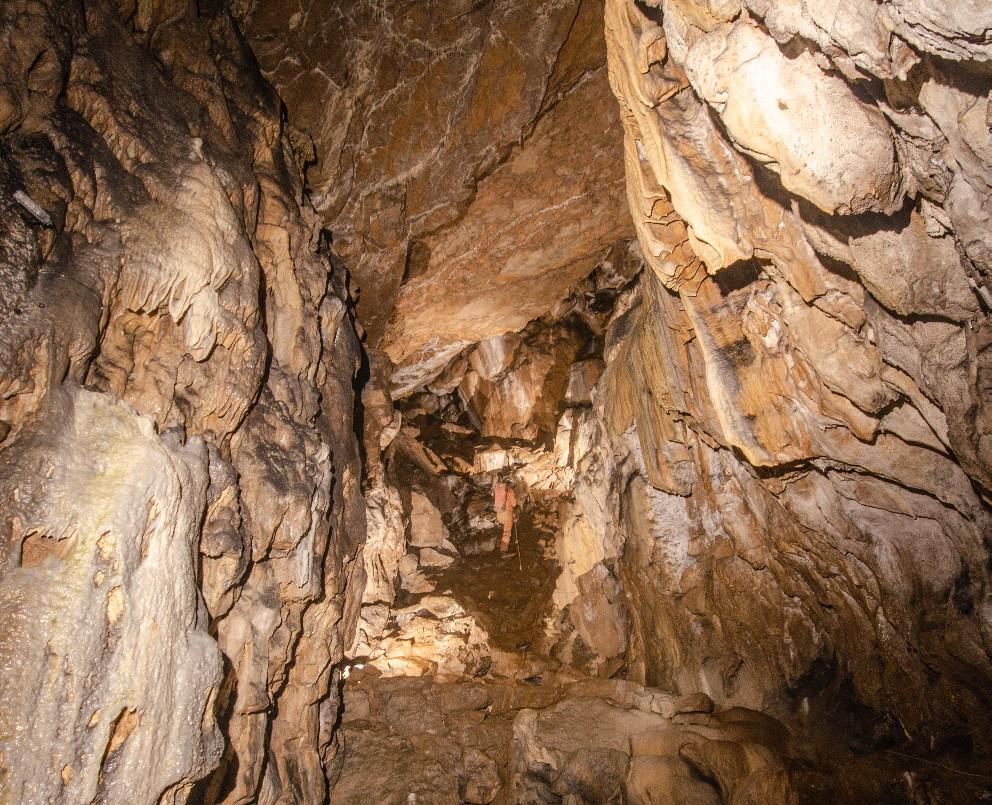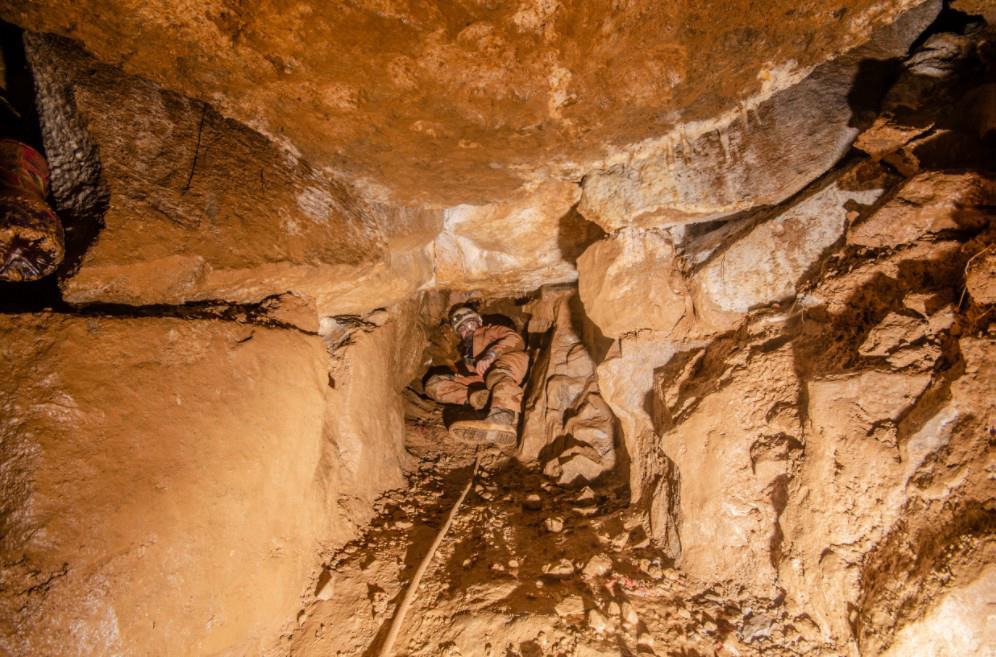May 2023
Pooles Cavern is an archaeological show cave in the centre of Buxton in the heart of the Peak District. The cave contains artefacts from the Roman era and has excited many an archaeologist over the past decades and is a significant location for cave science. But it is not the science, nor the archaeology that has piqued the interest of a number of cave diggers in recent times. It is the fact that the large passages of the show cave ends quite abruptly in a huge choke of boulders with no obvious way on. What lies beyond these boulders? Where does the stream come from that exits the bottom of the boulder choke? It is these questions that lead to many failed attempts at digging through the boulder choke over the years and these questions remain unanswered to this day.
Fast forward to 2017 and this potential of unexplored cave passages piqued the interest of two Derbyshire cavers, Allan Berry and Simon Dillon. Allan Berry is head of Derbyshire Cave Rescue and Simon Dillon is a caver with much experience as far afield as Alaska and Canada. Both have a track record of digging in Derbyshire and have made new cave discoveries abroad. Upon looking at the potential here they decided on a long term digging project that differed somewhat from the attempts already made. Instead of trying to follow the stream through the bottom of the boulder choke (which had become very unstable and dangerous), they decided to tackle the problem from the top.

A number of years ago two small diameter bore holes had been dug from the surface and appeared to break though into natural cavities beyond the show cave. The results did not conclusively prove the existance of cave passage but did give something to aim for. Allan and Simon first surveyed the surface between the boreholes and Pooles Cavern Entrance and then surveyed the cave to enable them to get a view of where the boreholes lay in relation to the end of the show cave. This gave them a direction to aim for. And so the digging began.

The digging involves moving through a boulder choke which has no solid walls, floor or ceiling and thus everything has to be done very carefully. Rocks are removed through various techniques, broken up and then moved back out of the dig. This becomes harder the further in you get as you then have further to extract the rocks. The dig is kept to a reasonable size in order to allow the diggers to work comfortably. Scaffolding is then used to support any unstable sections and to keep the diggers safe. This can be slow going and a typical digging session of say 6 hours will only see forward progress of only a meter or two at best.
The cave then dictates exactly where you go. Often your way forward may be blocked by either huge boulders the size of houses or by stuff too loose to be safe and you have to work your way around, over or under such obstacles. This type of terrain soon lead to the first S-bend in the passage which can be troublesome for removing rocks as they have to be moved around such bends. Once around this first bend the passage was dug in a straight line for around 10m without issue. Then quite abruptly they hit another difficult section that forced them downwards about 3 feet and round another bend before they were able to dig straight again. All the time however they were able to get back onto the compass bearing that takes them towards the bore holes.

On this straight section they started to need a lot of scaffolding due to the unstable condition of the roof. After this straight they were again forced downwards before going into the third straight section. By now it was getting difficult to take rocks out of the dig as it was by now a considerable distance with a few steps and a few bends. The removal of rocks from the dig has to be done in stages using trays to drag them down each section. At the end of each section they are transferred to a new tray for the next section. This involves a few people and thus helpers are enlisted every few sessions to help clear the rocks out of the dig.

Every so often the dig is resurveyed to ensure that they are heading in the right direction and towards the bore holes. The survey data is entered into a computer to give a graphical representation of the cave passages and the surface can be overlayed on top. The survey below shows, in 3D, a view of the existing cave and the dig along with the boreholes. This allows the software to work out that the boreholes are approximately 70m away from the dig face. It also allows the software to work out a bearing and inclination that, if followed, would intercept the bottom of the bore holes. It is this bearing that the diggers are maintaining in order to give the best chance of success.

The close up view below better shows the cave below the land surface and how it relates to the bore holes.

Today the dig continues, still aiming for the boreholes and still making a couple of meters of progress every couple of weeks. It may be a long time before the diggers make a breakthrough. Or it may never happen. But the possibility still tantalises the avid digger and the rewards should be worth the effort if it ever gives up its secrets.
Written by Allan Berry.
For more information on the diggers’ progress, follow Simon’s You-tube Channel.







